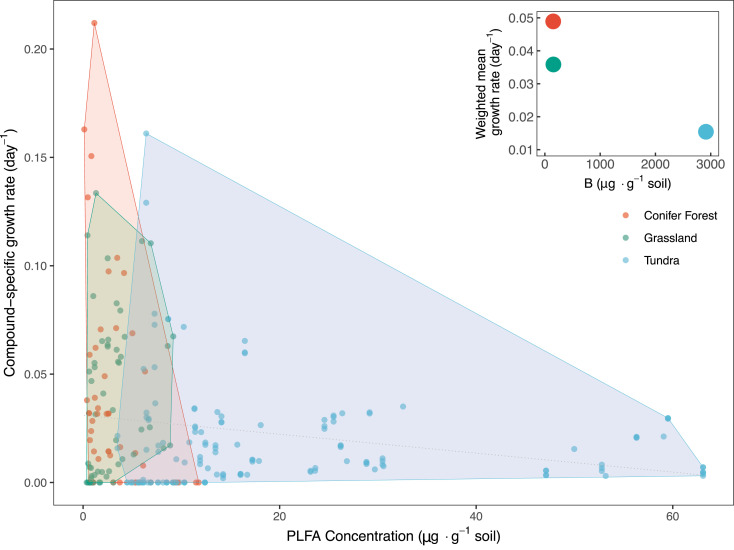Fig. 2.
Compound-specific PLFA abundance, measured via GC-FID (µg per g soil), plotted against estimated growth rates (day−1) in each of the three soils examined. There exists a very weak but statistically significant negative relationship between compound-specific growth rate and abundance (r = −0.14399, p = 0.016, Pearson’s). The thin dashed line notes the result of a linear model fit (y = −0.00025x + 0.02078, R2 = 0.02), further indicating a slightly negative trend with poor correlation. These results highlight the lack of a clear relationship between compound-specific pool sizes and growth rates in each soil. However, on the bulk scale, soils with lower total biomass, B, exhibited faster assemblage-level growth rates than the alpine tundra soil, which is relatively high in microbial biomass (Inset). This hints at a possible reciprocal relationship between total soil microbial biomass levels and microbiome turnover at the system level.

